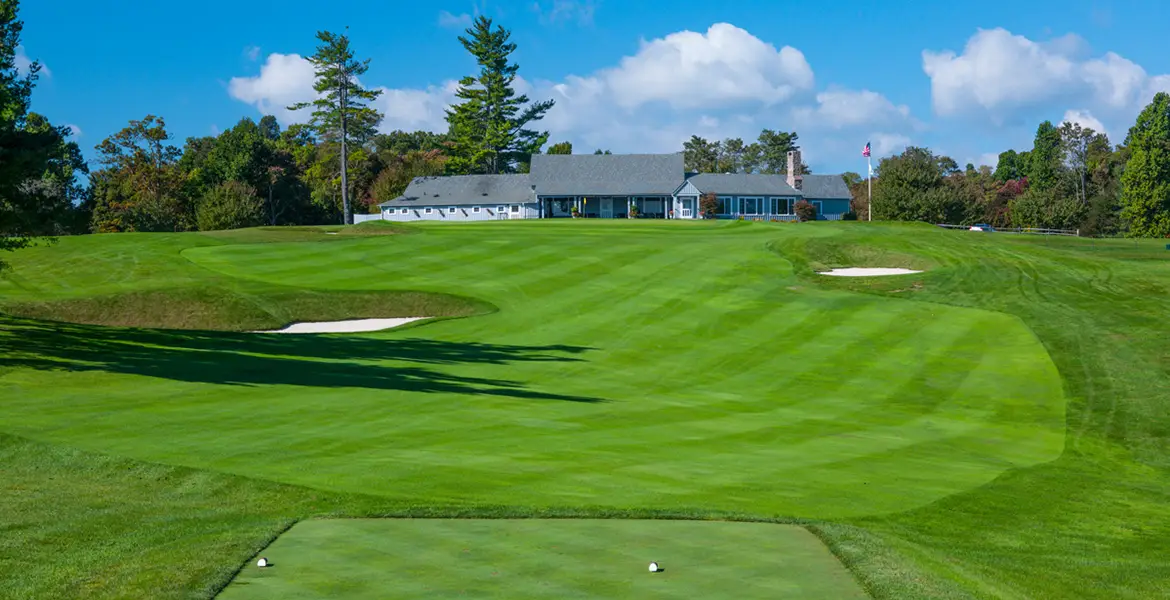A lot of golfers probably imagine that poor behavior at the Ryder Cup originated at The Country Club in 1999, when the infamous rush of Americans onto the 17th green followed Justin Leonard’s miraculous birdie putt against Jose Maria Olazabal. Or perhaps they point to the 1991 Ryder Cup, when gamesmanship, flag-waving and camouflage hats were remembered as much as the United States’ down-to-the-wire victory at Kiawah Island.
The truth is, the 1969 Ryder Cup at Royal Birkdale produced a far more egregious incident. So ugly was the fracas, it forced the captains of both teams, Sam Snead and Scotsman Eric Brown, as well as the president of the British and Irish Professional Golfers Association, Lord Derby, to rush from the clubhouse to the 8th green and defuse a situation that had been teetering on the edge of fisticuffs for some time.
The bloodletting actually began on the first morning, in a foursome match that pitted Scotsman Bernard Gallacher and Englishman Maurice Bembridge against Lee Trevino and Ken Still. On the 13th tee, Bembridge asked Still to move out of his sightline. Still bombastically moved everyone—caddies, players and officials—from their customary places on the tee.

At the same hole, Trevino bunkered his team’s second shot under the lip. When Still tried to extricate the ball, it rebounded and visibly hit his shoulder, which meant a loss of the hole. “It hit you, didn’t it?” Trevino asked. There was no answer from Still. “Pick it up,” said Trevino, walking to the 14th tee. Still was benched that afternoon and for the next morning’s matches.
On the second afternoon, Gallacher and Welshman Brian Huggett set out for a fourball match against Still and Dave Hill. One could hardly have dreamed up a more volatile quartet, and the trouble started on the 1st green, when Huggett asked Hill to stand still while Huggett putted. Then Still, who was almost breathing down Huggett’s neck, had to be asked to move. Never a shrinking violet, Huggett told Still, “I want you behind me from now on.”
At the 2nd hole, just as Gallacher was about to putt following a succession of waggles, Still suddenly called out to his caddie, who was attending the flagstick: “I don’t want you doing that. Bernard’s caddie should be doing it.”
The tension reached a fiery climax at the par-3 7th hole when, with Gallacher some three feet away, Still putted up just inside him and promptly holed out—thereby playing out of turn. “You can’t do that,” the British pair chorused, then addressed their complaints to referee David Melville, the professional from La Moye Golf Club in Jersey, Channel Islands. As Melville delved into his Rules book, Still snatched up Gallacher’s marker and shouted, “You can have the hole and the [expletive] Cup!”
As the players made their way up the 8th fairway, I remember not only the players shouting at each other, but the crowd also getting into it. Thankfully, the captains and Lord Derby arrived in the nick of time. It was the closest I ever saw to an actual fistfight on a golf course. Samuel Ryder, who donated the chalice that bears his name to spread international friendship through golf, must have been spinning in his grave.
The irony is that in the last of the 16 matches on the final day, Jack Nicklaus made what I believe is the greatest sporting gesture in golf history—even if it infuriated Snead at the time. That, of course, was the concession of Tony Jacklin’s final putt to allow the English hero a halved match, resulting in a 16-16 tie, the first time the British and Irish had avoided defeat since their 1957 victory at Lindrick.
Fortunately, Jack’s gesture, rather than his teammates’ and opponents’ misbehavior, has provided the enduring memory of the 1969 Ryder Cup.






